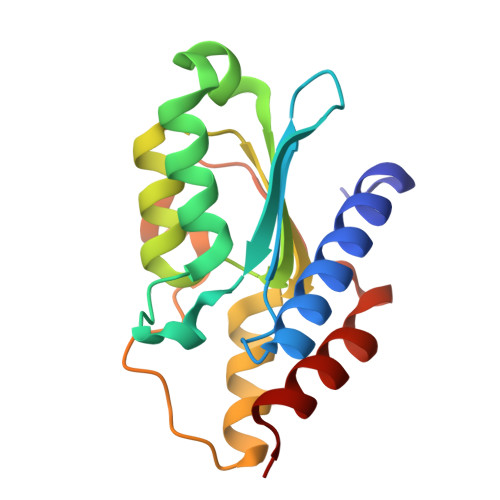Mechanism of deamination by mycobacterial deaminase selectively targeting mutagenic bases.
Porathoor, S., Choudhury, A.R., Chakrabarti, R., Anand, R.(2025) Nucleic Acids Res 53
- PubMed: 40173018
- DOI: https://doi.org/10.1093/nar/gkaf171
- Primary Citation of Related Structures:
8WLV, 8WLW, 8WLX - PubMed Abstract:
Nucleobase deaminases are important players in maintaining a stringent nucleobase pool and enhancing genetic diversity via judicious base editing. Here, we delineate the mechanism of Mycobacterium smegmatis deaminase, Msd, found predominantly in Mycobacterium species, that selectively catalyzes the deamination of mutagenic bases. Molecular dynamic studies reveal the dynamic nature of unique structural insertions that cycle between 'closed' and 'open' states, enabling zinc-assisted deamination by occluding the solvent. Corroborating X-ray crystallographic and biochemical studies assert that the appropriate length of the two gating loops and proper positioning of the di-proline motif they harbor are paramount to effective closure. Analysis reveals that although both natural base deaminases, guanine and cytosine deaminase, operate via a similar gating mechanism to Msd, they employ topologically differentially placed structural elements to achieve the 'closed' form. The comparison shows that Mycobacterium deaminases lack the dual-proton shuttle, which renders them ineffective for the deamination of natural bases but allows them to selectively target mutagenic s-triazine scaffolds, thereby imparting innate immunity against these drugs. The study highlights how topologically unique insertions in the cytidine deaminase fold play a critical role in harnessing evolutionary versatility, responsible in imparting fidelity for a nucleobase deamination reaction.
Organizational Affiliation:
Department of Chemistry, Indian Institute of Technology Bombay, Mumbai, Maharashtra 400076, India.



















